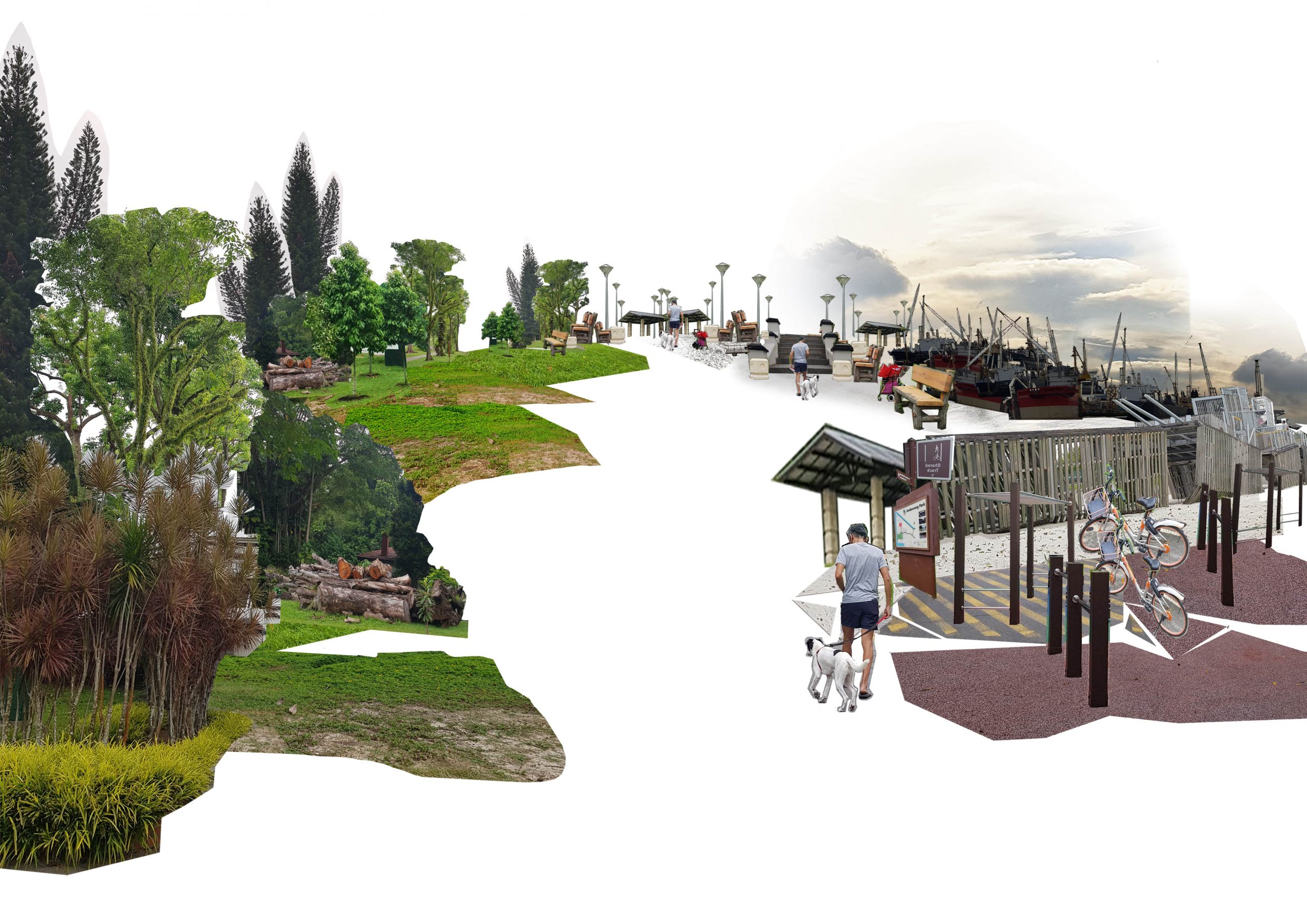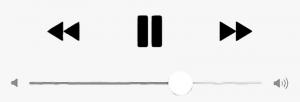Foundation 4D — Dérive
Our second assignment for Foundation 4D is to create a psychogeography map using images from the location allocated by our classmate, showcasing it together with a 3-minutes audio clip to enhance the experience of the audience.
Psychogeography and Dérive
Psychogeography was a term invented by Guy Debord in 1955, with inspiration from a French nineteenth-century poet and writer Charles Baudelaire’s concept of the lâneur – an urban wanderer. With this, Debord suggested playful and inventive ways of navigating the urban environment to examine its architecture and spaces. Psychogeography is also defined as the “specific effects of the geographical environment on the emotions and behaviours of individuals”.
Hence, the dérive was invented as a critical tool for understanding and developing the theory of psychogeography. It continued to be a critical concept in the theories of Situationist International, an international movement of artists, writers and poets who aimed to break down the barriers between culture and everyday life. dérive explored ways of unleashing the subconscious imagination of the individuals. An early example of this concept could be La Route des Alpes,1937, a painting of Tristam Hillier.
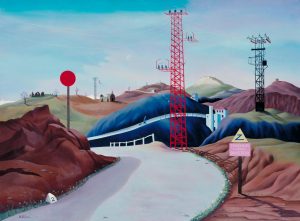
Dérive: “A mode of experimental behavior linked to the condition of urban society: a technique of transient passage through varied ambiances.” Situationists used “ambiance” to refer to the feeling or mood associated with a place, to its character, tone, or to the effect or appeal it might have; but they also used it to refer to the place itself, especially to the small, neighborhood-sized chunks of the city they called unités d’ambiance or unities of ambiance, parts of the city with an especially powerful urban atmosphere.
Wood “Lynch Debord.”
Artist Reference & Inspiration
Yellow Menace
Yellow Menace is a Japanese-Canadian art vlogger who based in Canada, Korea and Thailand.
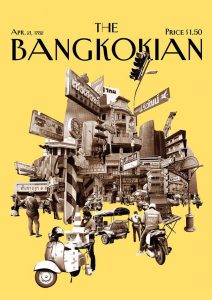
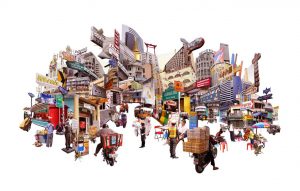
Marie Korjaz
A project by Marie Kojar to explore how human and nature can blend together in a landscape, merging into a new genetically engineered ‘natural factory’ for luxury goods, masqueraded as a revamped ‘eco-industry’.
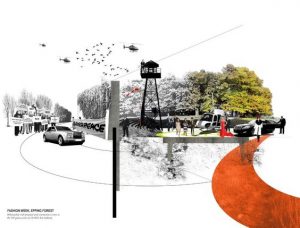
Revisiting My Childhood Location – Sembawang Park
This is the park I have been going to since young, however, I have stopped going there when it started to renovate in 2012. Sembawang Park is located away from the city, which also has a beautiful beachside and also a popular fishing ground.
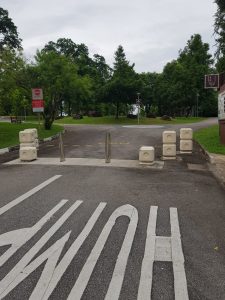
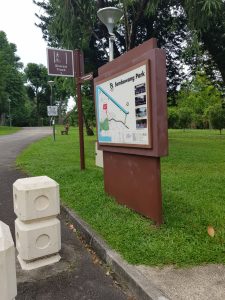
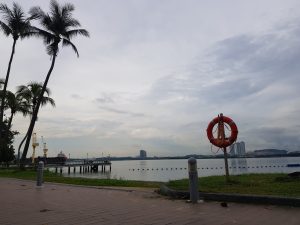
As I have not visited the park since it renovated, I chose to follow the path from the entrance of the park. As I went to the park around 4pm in the evening, I did not expect the park to be crowded with people. Many people are gathering at the fitness corner and playground, while some of them are setting up at the barbeque pit.
Ideation Of Concept
In my memories, Sembawang park used to a park with lots of trees, animals and a windy place. However, during this visit, I realised how things can change just with a single renovation. There are now wider roads for people to jog and walk their dogs, all the trees are carefully aligned along the path. Throughout the whole trips, the park felt too perfect for me. Everything is perfectly placed, there are fitness facilities, toilets, benches and table designed for people all around the park.
Even though I understand it is a park, I am sometimes annoyed by all the human noises when I am immersing myself into nature. Sembawang Park felt like a perfectly planned park, with a blend of nature, history and human. But to me, I felt that the park was contradicting and all the elements are invading each other within the park.
Concept 1:
Thus I wanted to showcase in my psychogeography map how manmade structures or elements and nature could collaborate to make a balance within the park. For my first concept, I printed out what interests me at the park and laying it out with some text to describe it.
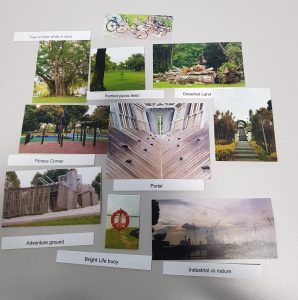
Concept 2:
After the consultation with Prof. Yue Han and comment given by my classmates, I decided to go deeper into the concept of how human activities and manmade structures and facilities and nature correspond to each other in the park. I tried to bring out this idea using a spectrum structure for my derive. The picture of a playground section is used as a middle point of my spectrum for its symmetrical balance composition and helping the other pictures to branches out from there.
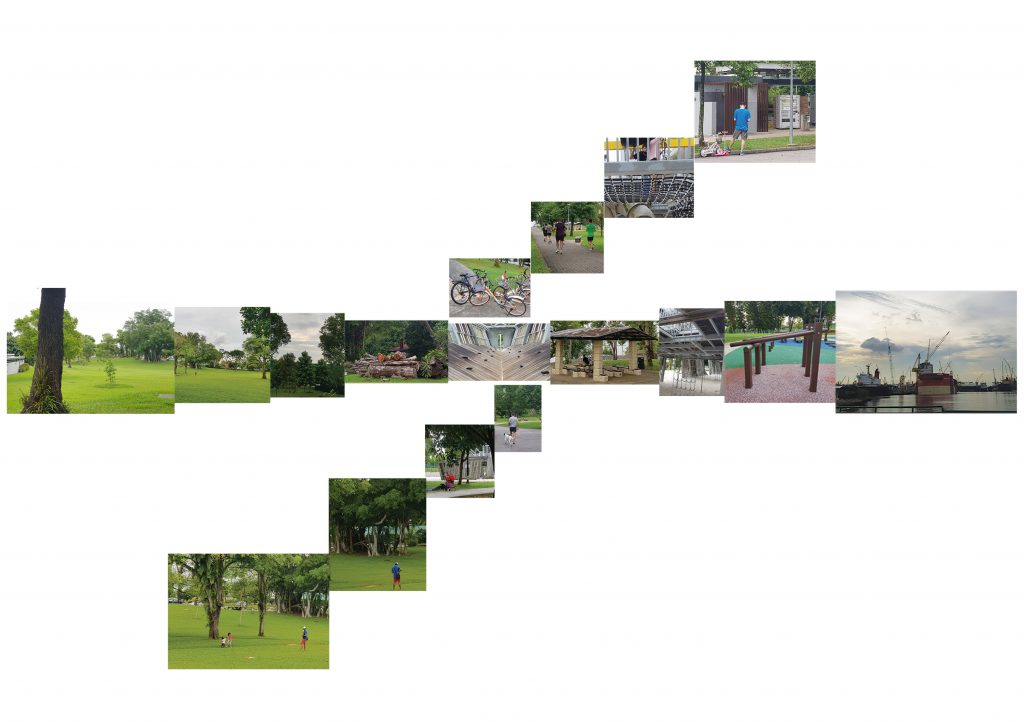
I tried to achieve a gradient spectrum effect in the middle of the paper by arranging the photos according to its size. The left side of the spectrum is the nature side of the park, whereas the right side is leaning towards human activities and manmade stuff. I also showcase how human interacting with both sides. However, I checked with my friends to see if they understand what I tried to portray in this map. Most of them cannot understand the interaction of human and nature in a park and also pointed out how the map is quite confusing to look at as they do not know which part to look at.
Final Design
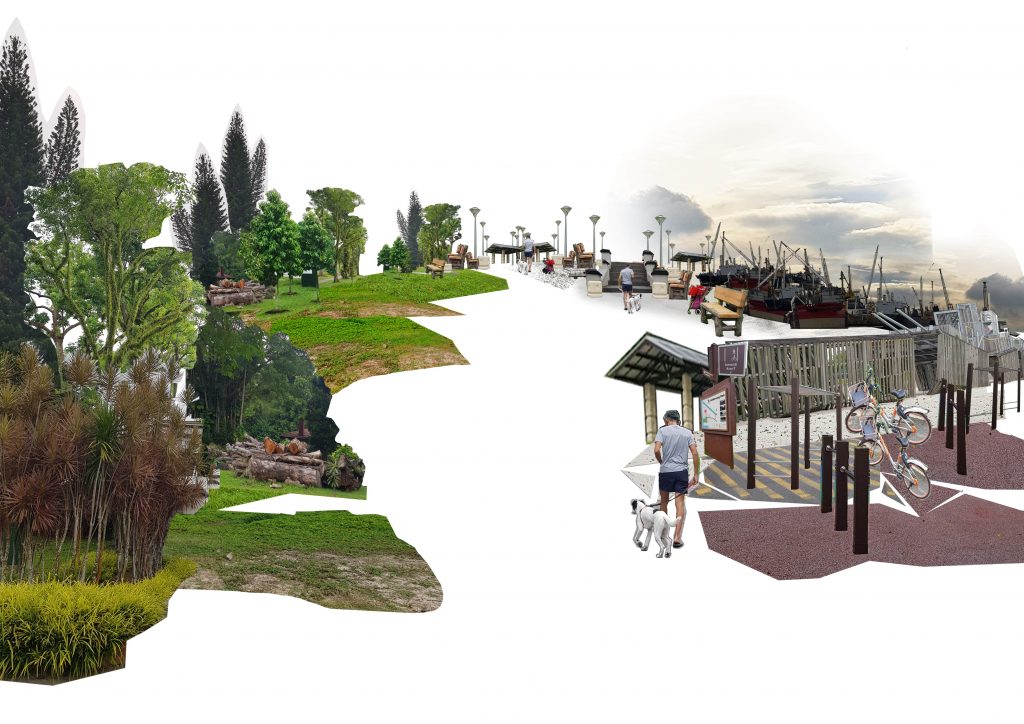
Invader of Park
The park is a place designed for the human to spend leisure tie, exercising, playing and relaxing. However, when you talked about a park, the only thing that came to your mind is always green, the trees, the grass, the bins and more So why a park exists? Is it made for human, or is it to contains nature? Who is the invader of the park?
A park always contains manmade facilities designed for human activities and we, as a human, has also mostly only enjoy using these facilities at a park. The fitness corner, the playground, the toilet, shelter and more. To think about it, isn’t it just a ‘nature theme for all these facilities?
We killed trees and grass to build a park, and we planted trees and grass again to create a ‘park’. Now, do we invade the park?
Explanation
In the beginning, I only wanted to portrait how human and nature interact with each other in a park. However, I felt that it is quite a shallow idea and it did not really express how I felt when I visited the Sembawang Park. Even though I appreciate the presence of manmade facilities, I hated it when I was interrupted by the noises made for all the human activities while immersing myself into nature. So I was thinking, why can’t I design a park to this problem. So I created my psychogeography map to consist of two areas, one side which is mostly nature, and another side with all the facilities and human activities area. The park is designed in this way so people can make their choice to go to the side which suits their mood on the day. You are able to immerse yourself in nature, with all the birds chirping, cricket sound and wind gushing through the trees. Whereas if you are going with your family and friends, you can definitely enjoy yourself on the right side where all the facilities are at!
Reflection
One thing that I have learnt doing the derive is to think deeper while creating my artwork instead of only going with the first idea. It is great that I have the time to work on another concept and idea before deciding which one I want to drill in for final. I think I also need to create a mindmap and have an idea before going blindly into my work.
After the presentation, Prof. Yue Han pointed out that I can try pushing my derive map to be more “commercialize” so to give a deeper impression that it will look more like a commercial board of a park concept. Also, he commented on the confusion and lacking in my artist statement. As the artist statement failed to give the audience an impression that the derive map is supposed to be urban planning for a park, thus making the audience lack in linking the map and artist statement together.
Reference
https://www.tate.org.uk/art/art-terms/p/psychogeography
mappingweirdstuff.wordpress.com/2009/06/14/mapping-weird-stuff-psychogeography/
